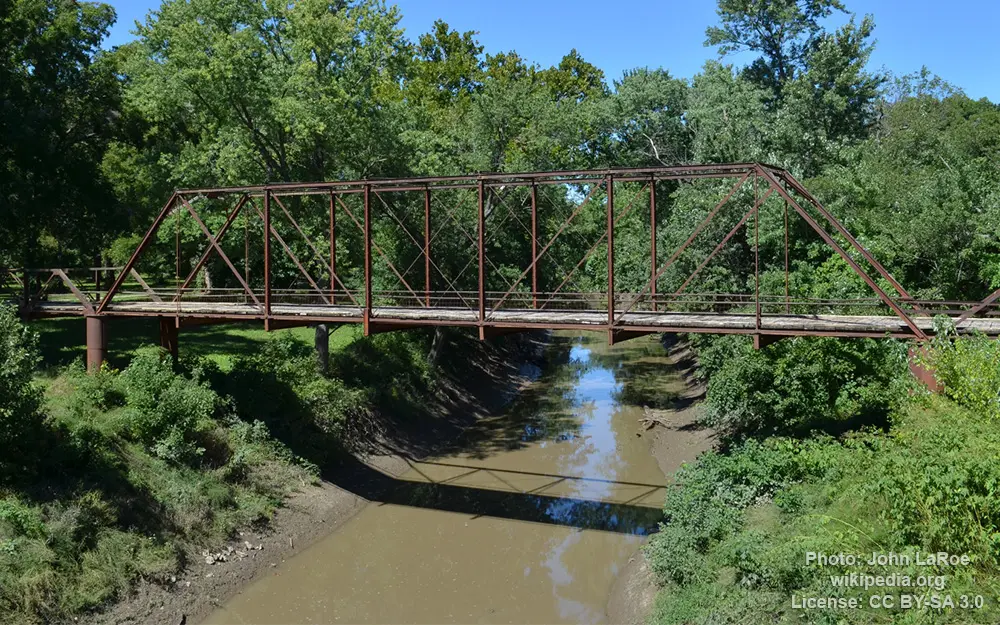Marais des Cygnes River

General data
- Name: Marais des Cygnes River
- Water system: Missouri River
- Water type: River
- Progression: Osage River -> Missouri River -> Mississippi River -> Gulf of Mexico -> Atlantic Ocean -> Planet Earth
- Climates: Subtropical
- Continents: North America
- Countries: United States of America
The Marais des Cygnes River is a principal tributary of the Osage River, about 217 miles (349 km) long, in eastern Kansas and western Missouri in the United States. Via the Osage and Missouri rivers, it is part of the watershed of the Mississippi River. The name Marais des Cygnes means Marsh of the Swans in French (presumably in reference to the trumpeter swan which was historically common in the Midwest). The Marais des Cygnes is formed about 1 mile north of Reading, Kansas, a city in northern Lyon County, by the confluence of Elm Creek and One Hundred Forty-Two Mile Creek, and flows generally east-southeastwardly through Osage, Franklin, Miami and Linn counties in Kansas, and Bates County in Missouri, past the Kansas towns of Melvern, Quenemo, Ottawa, Osawatomie and La Cygne and through the Marais des Cygnes National Wildlife Refuge. In Missouri, it joins the Little Osage River at the boundary of Bates and Vernon counties to form the Osage River, 6 miles (10 km) west of Schell City. In Osage County, Kansas, a U.S. Army Corps of Engineers dam causes the river to form Melvern Lake, which is the site of Eisenhower State Park.

 English
English
 Spanish
Spanish
 German
German
 French
French
 Serbian
Serbian
 Russian
Russian

